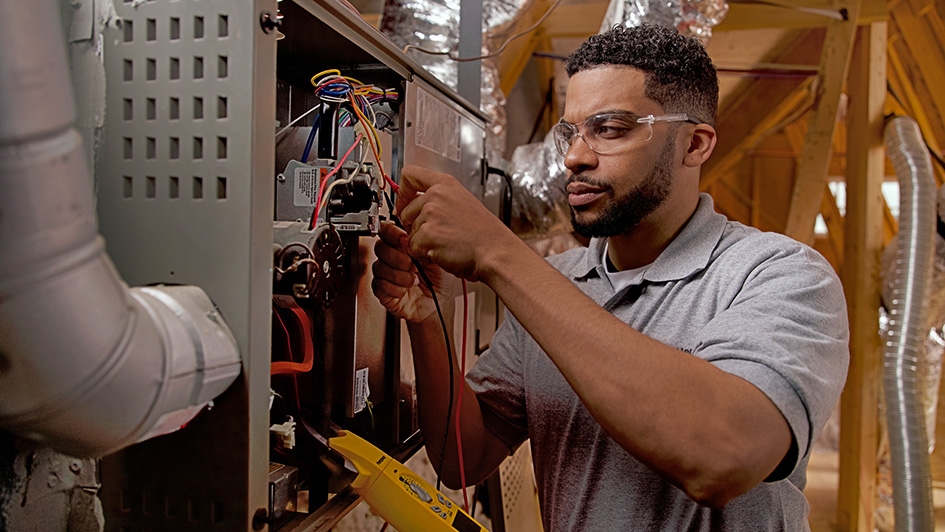
A furnace is usually a background player in your home, keeping you warm in the cold winter months. It often isn't noticed until something goes wrong.
One cause might be that your furnace has a cracked heat exchanger. It can potentially be hazardous, so it’s important to familiarize yourself with the symptoms of a cracked heat exchanger and what you can do if you are worried that is the problem.
What Is a Heat Exchanger in a Furnace?
A heat exchanger helps transition heat from the combustion chamber of your furnace to the air that moves through the air ducts. It usually accomplishes this through coils or tubes that heat up the air while serving as a barrier to keep the gasses formed in the combustion chamber, called flue gasses, from escaping out into your home.
Is a Cracked Heat Exchanger Dangerous?
Thanks to its central role, it’s no surprise that a broken heat exchanger can be hazardous. A damaged heat exchanger can allow dangerous gasses – including carbon monoxide, which can be lethal – to circulate throughout your home.
For obvious reasons, don't ever turn on your heating if you think it has a cracked heat exchanger, as this could make the whole household sick. Reach out to an HVAC professional right away if you think your heating has a cracked heat exchanger that needs to be repaired.
Four Symptoms of a Cracked Heat Exchanger:
- Furnace shuts off: A crack in your heat exchanger may cause your furnace to switch off.
- Strange Smells: If the air escaping your furnace has an intense chemical odor, it may be evidence gas is slipping through cracks in your heat exchanger. These byproducts, which can smell like formaldehyde, are a common warning sign.
- Carbon monoxide alarm goes off or you recognize symptoms of poisoning: If a cracked heat exchanger is relieving carbon monoxide into your home, your carbon monoxide alarm may go off or household members may experience signs of carbon monoxide poisoning. Side effects include headaches, dizziness, weakness, nausea, vomiting or feeling tired. If your alarm goes off or you feel unusually tired, leave the home right away and then call for help.
- Soot: If you find black sooty buildup around the exterior of your furnace, it’s an indication something could be seriously wrong.
What You Should Do if Your Furnace Heat Exchanger is Cracked
If you worry your furnace has a cracked heat exchanger, call a professional experienced in furnace installation Covington right away so they can take a look at your system and, if required, handle a furnace heat exchanger replacement. Costs often differ depending on the situation, but estimates run in the neighborhood of $1,000 to $3,000.
Fortunately, the good news is that heat exchangers are often covered by the warranty. You should review the warranty paperwork on your furnace, since while the warranty may not cover the entire cost of repairs, it can significantly reduce your bill.
How to Avoid a Cracked Heat Exchanger in Your Home
One of the best ways to minimize the risk of problems in your furnace overall is through regular furnace maintenance. Furnaces provide the best possible return on investment when they run efficiently. Contacting a trained professional to inspect your furnace for old parts, dirty filters and other potential problems can help you avoid getting a big bill later on.
It’s also beneficial to review your furnace filters every few months – it’s recommended some filters be swapped out every 90 days or sooner if they are dirty or grimy. While the filters are not part of the heat exchanger itself, the strain of drawing air through a clogged filter makes the entire furnace work longer to accomplish its job. And the harder your furnace works, the more wear and tear parts like the heat exchanger will sustain.
